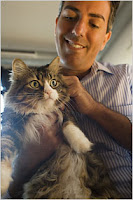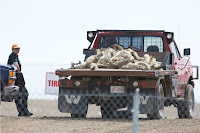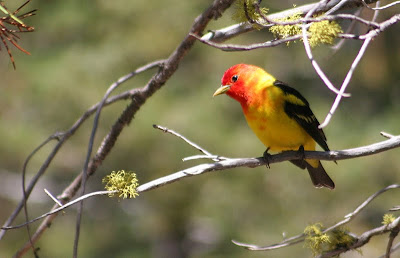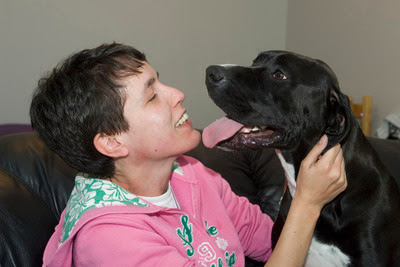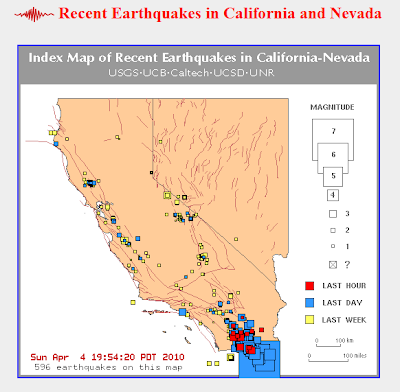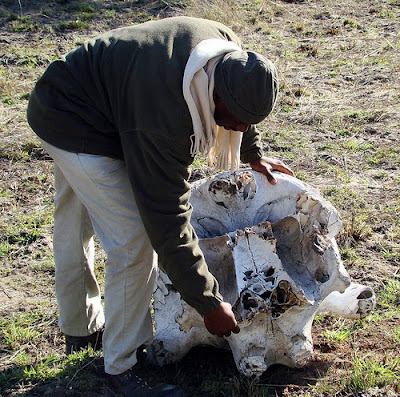
"An oil-soaked bird floats dead," victim of the Cosco Busan oil spill in San Francisco Bay, 2007. SF Chronicle photos [above and left] by Michael Macor.
 Gut-wrenching: the Gulf Coast oil spill "could become the nation's worst environmental disaster in decades."
Gut-wrenching: the Gulf Coast oil spill "could become the nation's worst environmental disaster in decades.""The terrible loss of 11 workers may be just the beginning of this tragedy as the oil slick spreads toward sensitive coastal areas vital to birds and marine life and to all the communities that depend on them", said Melanie Driscoll, an Audubon bird conservation director, who is monitoring the situation from her base in Louisiana. "For birds, the timing could not be worse; they are breeding, nesting and especially vulnerable in many of the places where the oil could come ashore." [Source.]
From a must-read post, Complete and Utter Disaster:
We’re in the midst of spring migration, a time of year when hundreds of thousands of neotropical migrating songbirds are teeming onto our continent from parts south, many of them taking a route that famously leads them to jump the Gulf of Mexico in one swoop. It’s a flight that can take up to 20 hours and leaves birds completely famished and exhausted. To say that it’s difficult is an understatement. It’s one of the truly amazing behaviors in the natural world. And now at the peak of migration, for those birds taking a path straight across the gulf with a bullseye on, perhaps, crucial bits of coastal habitat like Alabama’s Dauphin Island or Florida’s St. Mark’s NWR, the last stretch of migration has to be through a sooty, black curtain of oil smoke several thousand feet high.Updates at the International Bird Rescue Research Center's blog.
All links in this post via the most excellent Mike McDowell, who wrote on Facebook that "everyone who voted for "Drill Baby Drill" [should] start heading down to the gulf coast to help clean oil off of critters."
As old and jaded and cynical as I am, I still have trouble wrapping my brain around the fact that we [consumers, voters, Americans] allow this sort of disaster to happen. It shouldn't have happened. It shouldn't be happening.
Commenter Bill on Coyote Crossing writes: "For all of you out there who care please lessen your use of the oil based economy, and, at the very least, don’t do business with BP."
